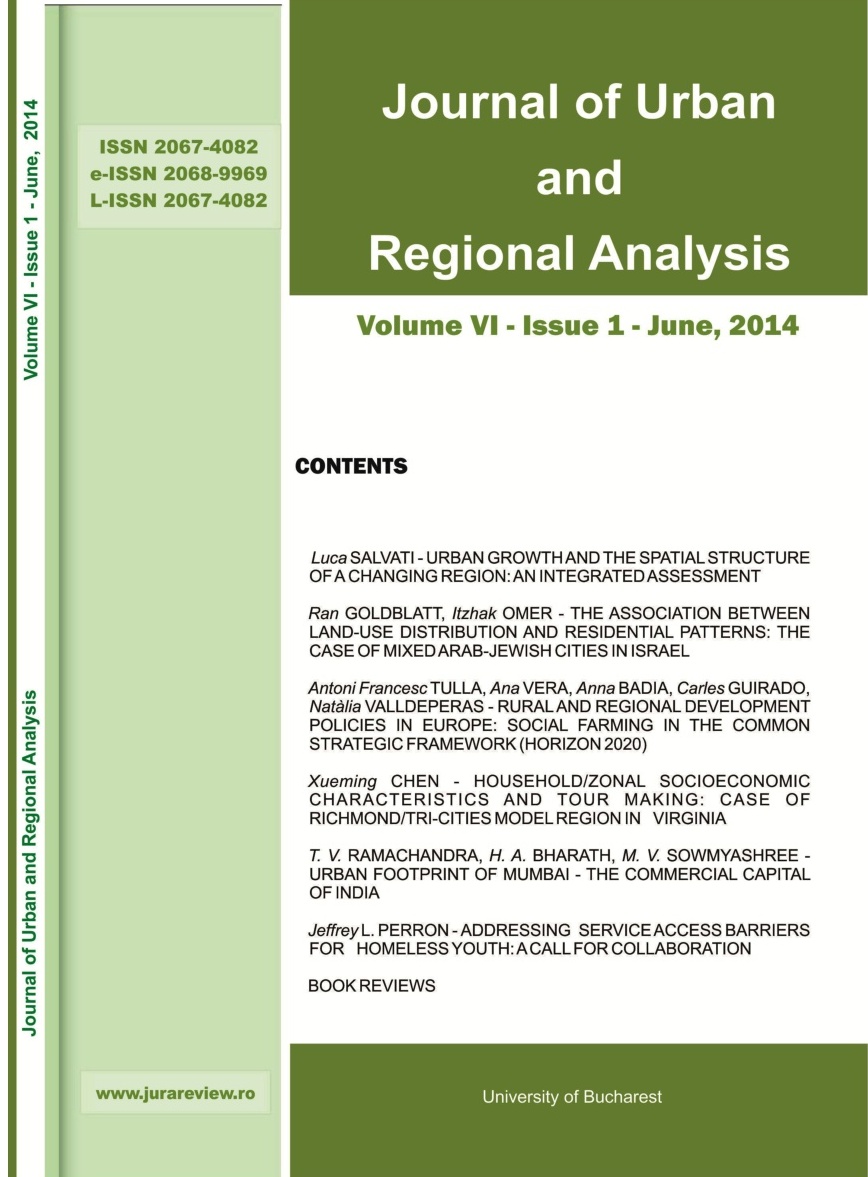URBAN FOOTPRINT OF MUMBAI - THE COMMERCIAL CAPITAL OF INDIA
URBAN FOOTPRINT OF MUMBAI - THE COMMERCIAL CAPITAL OF INDIA
Author(s): T. V. Ramachandra, M. V. Sowmyashree, H. A. BharathSubject(s): Energy and Environmental Studies, Rural and urban sociology, Globalization, Socio-Economic Research
Published by: Editura Universitară
Keywords: urbanization; urban sprawl; urban pattern; remote sensing; spatial metrics; Mumbai;
Summary/Abstract: Urban footprint refers to the proportion of paved surface (built up, roads, etc.) with the reduction of other land use types in a region. Rapid increase in the urban areas is the major driver in landscape dynamics with the significant erosion in the quality and quantity of the natural ecosystems. The urban expansion process hence needs to be monitored, quantified and understood for effective planning and the sustainable management of natural resources. Cities and towns have been experiencing considerable growth in urban area, population size, social aspects, negative environmental and geographical influence, and complexity. Mumbai, the commercial capital of India, has experienced a spurt in infrastructural and industrial activities with globalization and opening up of Indian markets. Unplanned urbanization has resulted in dispersed growth in peri-urban pockets due to socio-economic aspects with the burgeoning population of the city. Consequent to this, there has been an uneven growth pattern apart from the increase in slums in and around the city. This has necessitated the understanding of the urbanization pattern and process focusing especially on the expanding geographical area, its geometry and the spatial pattern of its development. This communication discusses the urban footprint dynamics of Mumbai using multi-temporal remote sensing data with spatial metrics. Land use analysis indicated a decrease of vegetation by 20% with an increase in urban extent by 155% during the last three decades. Landscape metrics aided in assessing the spatial structure and composition of the urban footprints through the zonal analysis by dividing the region into four zones with concentric circles of 1 km incrementing radius from the city centre. The study reveals a significant variation in the composition of the urban patch dynamics with increasing complexity and aggregation of urban area at the centre and sprawl at the outskirts. Shannon’s entropy further confirms of sprawl with time. Further zoning with the circular gradients aided in understanding the transition process of land use categories into urban patch.
Journal: Journal of Urban and Regional Analysis
- Issue Year: 6/2014
- Issue No: 1
- Page Range: 71-93
- Page Count: 23
- Language: English

